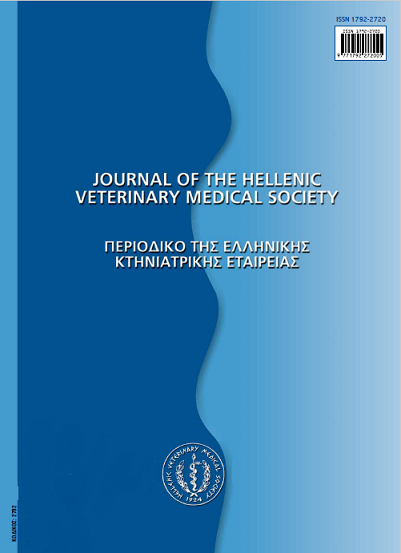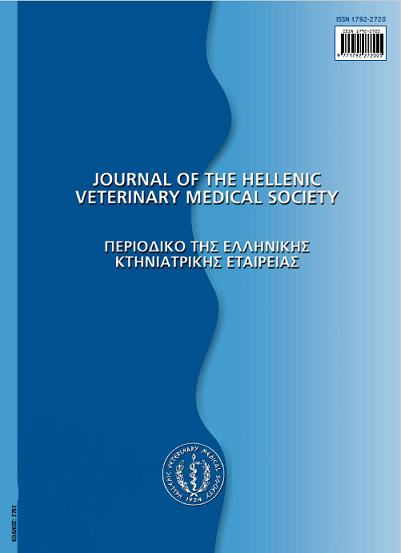Streptococcal infections of farmed fish
Abstract
The genus Streptococcus is large and complex, accommodating a wide range of Gram positive bacteria. Only a few biotypes have been isolated from fish and the most pathogenic are those belonging to D serogroup, otherwise known as the Enterococci. Streptococcal septicaemia was first among cultured rainbow trout (Onchorynchus mykiss) in Japan in 1958. Since then, the disease has appeared sporadically or in epizootics among cultured or wild fish both in freshwater and marine environments all over the world. Among the freshwater species infected, rainbow trout (Onchorynchus mykiss) and tilapia (Oreochromis niloticus) are the most important species. Clinical signs vary among species of affected fish. The most common symptoms are loss of appetite, erratic swimming, darkening of body colour, eye lesions, external haemorrhagic lesions and ulcerations. The standard system for identification is based on the antigenicity of the carbohydrate moiety of the cell wall, according to a scheme devised by Lancefìeld in the 1930's. The American freshwater isolates obtained by Robinson & Meyer (1966), Plumb et al. (1974), Rasheed & Plumb (1984) were all typed Lancefield's group Β serotype in contrast to almost all of the much more frequent isolates from marine fish, which are usually untypable Enter ο co ecus-like strains. The Streptococcus strains isolated from yellowtail (Seriola sp), ayu (Plecoglosus altivelis) and flounder (Rhombosolea. sp) have similar biochemical reactions to Streptococcus iniae, a species isolated from dolphins by Pier & Madin (1976), which is defined in Bergey's Manual as a separate species. Kusuda et al.(1991) have analysed numerous strains from yellowtail infections in mariculture and in eels and have concluded, on the basis of DNA/DNA hybridization studies and biochemistry that a specific condition, caused by such streptococci, exists and that these bacteria were closest to Enterococci in characteristics and that infectious coccosis of marine fish, as seen in Japan, should be called "Enterococcal infection". Enterococci released from diseased fish seem to be the main source of infection. It has been shown that these bacteria remain in seawater and particularly in the mud around farms for a long time. Higher numbers of microorganisms exist in the seawater during summer months in contrast to the winter months when the bacterial load is higher in the mud (Kitao et al. 1979). Ghittino & Prearo (1992) have shown that in freshwater fish the outbreak of the disease was related to an organic pollution of the rivers supplying fish farms, associated with high water temperature (21-22°C). Wild fish can also be infected and spread the bacteria. It is generally believed that the infection is horizontal with infection occurring from direct contact with infected fish or contaminated fish food (Robinson & Meyer, 1996). The mechanisms of enterococcal infections pathogenicity are not yet fully understood.
Article Details
- Zitationsvorschlag
-
ATHANASSOPOULOU (Φ. ΑΘΑΝΑΣΟΠΟΥΛΟΥ) F., & ROBERTS, R. J. (2017). Streptococcal infections of farmed fish. Journal of the Hellenic Veterinary Medical Society, 55(2), 136–144. https://doi.org/10.12681/jhvms.15174
- Ausgabe
- Bd. 55 Nr. 2 (2004)
- Rubrik
- Review Articles
Authors who publish with this journal agree to the following terms:
· Authors retain copyright and grant the journal right of first publication with the work simultaneously licensed under a Creative Commons Attribution Non-Commercial License that allows others to share the work with an acknowledgement of the work's authorship and initial publication in this journal.
· Authors are able to enter into separate, additional contractual arrangements for the non-exclusive distribution of the journal's published version of the work (e.g. post it to an institutional repository or publish it in a book), with an acknowledgement of its initial publication in this journal.
· Authors are permitted and encouraged to post their work online (preferably in institutional repositories or on their website) prior to and during the submission process, as it can lead to productive exchanges, as well as earlier and greater citation of published work.










